Sensereo MS-1 Smoke Detector w/Matter over Thread (review)
Smart sensors bring a wide range of benefits to your home, from motion and contact sensors that enhance security, to leak sensors that help prevent costly water damage. Some sensors, however, are ones you hope never have to activate – yet you’ll be grateful they did when needed. Smoke detectors fall firmly into this category: essential life-saving devices that you hope will never be triggered, but could make all the difference in an emergency.
Today’s product review focuses on a smoke detector and siren – two functions that typically go hand in hand. This device not only detects smoke and sounds an alert but also brings smart home integration into the mix, supporting the latest technologies: Matter and Thread.
THE SENSEREO MS-1
I was sent the MS-1 ahead of its official release. Since it was initially an in-house test unit, it arrived in a plain white box – so, unfortunately, there’s no retail packaging to show today. That said, the company did provide an image of what the final packaging will look like, so here’s what you can expect if you pick one up yourself.
As you can see, the MS-1 is a Matter over Thread device. If you’re using Apple Home, you’ll need both a Matter controller and a Thread Border Router to take full advantage of its smart features. That said, it’s worth noting that even without any of the smart functionality, the MS-1 still works as a standalone smoke detector and siren – so it doesn’t depend on smart home integration to do its most important job.
As for what’s in the box, it’s fairly minimal: just the MS-1 unit itself, a ceiling bracket, and some rawl plugs and screws for installation.
The MS-1 looks fairly typical for a smoke alarm – almost boring, you might say – but that’s not necessarily a bad thing. Devices like this are meant to be heard, not seen, and when it comes to saving lives, aesthetics take a back seat. Around the edges are vents that allow smoke to enter and reach the sensor, triggering the alarm when needed. On the rear, you’ll find the on/off button, a battery compartment, and the Matter setup QR code.
The on/off button is a particularly clever design feature. It aligns with a slightly off-centre hole in the ceiling bracket, so when the MS-1 is locked into place, the button is automatically switched on – mechanically, you could say. This ensures the sensor is always activated once installed, removing any doubt about whether you remembered to switch it on.
The MS-1 includes a built-in, non-removable battery rated to last for seven years. This matches both the warranty period and the recommended lifespan of the device, after which it should be replaced entirely. That’s in line with most other smoke detectors on the market.
On the front, there are just two visible features: a ‘test/hush’ button and an LED indicator. As the name suggests, the button allows you to test the siren or temporarily silence it if it goes off – whether accidentally or otherwise. The LED provides a visual status indication, which is especially helpful for those with hearing impairments. It also changes colour to alert you to various conditions, such as a low battery, disconnection from your smart home setup, or other faults.
The siren itself is rated at 85dB, which is the standard requirement for smoke alarms. However, because of the piercing tone specific to smoke detectors, it sounds significantly louder in practice.
The rear of the MS-1, where the Matter QR code is located, also serves as the cover for the battery compartment. While the device includes a built-in, non-removable battery for core operation, it also features a separate, replaceable CR123A cell. This additional battery is dedicated solely to powering the smart home functions – specifically, Matter over Thread communication.
It’s unclear exactly how long this secondary battery is expected to last, but importantly, it doesn’t affect the sensor’s primary function. Even if the CR123A battery runs out, the MS-1 continues to operate as a standard smoke detector. You’ll simply lose smart features until the battery is replaced and the device reconnects to your smart home system.
INSTALLATION
Installation difficulty will largely depend on where you choose to mount the detector. In my case, I installed it in our bedroom, attaching it to a false ceiling that was easy to drill into.
As a general rule, smoke detectors should be mounted facing downward, since smoke rises and then spreads outwards. This is also why the MS-1’s vents are positioned around the sides – to maximise the chance of detecting smoke as it spreads across the ceiling.
IN APPLE HOME
Adding the MS-1 was a simple, one-time setup – no different from adding any other HomeKit device. In the Apple Home app, it appears under the Alarm Sensors section at the top of the room view, grouped alongside other sensor types. In my case, that includes just two: the MS-1 and the Qingping Air Monitor Lite. The latter reports CO₂ levels under Alarm Sensors, while its PM2.5/PM10, temperature, and humidity readings are shown in their respective categories.
As you might expect, the settings for the smoke detector are fairly minimal. You’ll see a simple status indicator showing whether smoke has been detected (Yes/No), along with the battery level – presumably for the removable CR123A cell. Since this is a Matter device, you also get the option to Turn on Pairing Mode to connect it with additional Matter-enabled platforms.
THE MS-1 IN TESTS AND IN USE
As I mentioned at the start of this review, a smoke detector is one of those devices you hope never has to activate – but absolutely must if there’s ever a fire in your home. Because of that, it’s difficult to carry out repeatable or consistent testing in the same way you might with motion or contact sensors, which can be triggered multiple times a day without issue.
When reviewing a previous smoke detector from Aqara (video HERE, review HERE), I used a simple method to test its responsiveness—a smouldering, smoking piece of card. While this can produce results, it’s far from the most reliable approach, as I’ll explain below.
- Inconsistent Smoke Production: Cardboard smoke varies greatly depending on how it’s burned – its moisture content, burn temperature, and air flow all affect the amount and type of smoke it produces. This can result in either too little smoke to trigger the alarm, or too much, creating a fire hazard.
- Wrong Type of Smoke: Most modern smoke detectors are photoelectric, which respond best to slow, smouldering fires with visible particles – but even then, card smoke may not consistently produce the right particle size or density. Ionisation detectors, on the other hand, respond better to invisible combustion particles from fast flames, which card smoke doesn’t reliably simulate either.
- Damage to the Detector: Burning card near a detector can leave behind soot or residue, potentially clogging or contaminating the sensor, reducing its future sensitivity.
- Safety Hazard: Lighting card indoors, even for testing, poses a fire and inhalation risk. It’s a hazardous method not recommended by any safety standards.
- Not Standardised: This method isn’t recognised by safety organisations like UL (Underwriters Laboratories) or EN standards in Europe, meaning results are not trustworthy or repeatable.
Taking all of this into account, it made sense to invest in a tool specifically designed for safely testing smoke detectors. The best part? It doesn’t leave behind that lingering smell of smoke that can take ages to clear.
Using this method, I was able to test the MS-1 multiple times. While the standard allows up to four minutes for a smoke alarm to sound after detecting smoke (typically within 30 to 90 seconds), the MS-1 consistently triggered in 10 seconds or less. It also reliably sent notifications to my phone via Apple Home. Since there’s no dedicated app for this device, Apple Home is your sole source of notifications – but it performed flawlessly throughout testing. Realistically, short of setting your sofa on fire, there’s not much more you could ask of a smoke detector.
One important note: the MS-1 is currently certified for use only in the EU and UK. While it likely meets the requirements of relevant US standards, using it in the US could potentially affect your home insurance – particularly if your provider requires officially approved devices.
All in all, for just US$49.99, the MS-1 is a solid and reassuringly capable device. Although this is Sensereo’s first entry into the smart home space, it’s encouraging to see them fully embrace both Matter and Thread. That said, they’re hardly newcomers – they already have experience producing conventional smoke and carbon monoxide alarms.


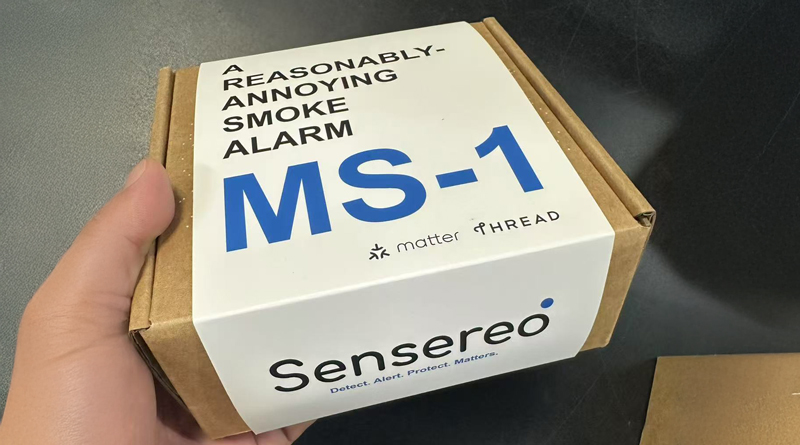

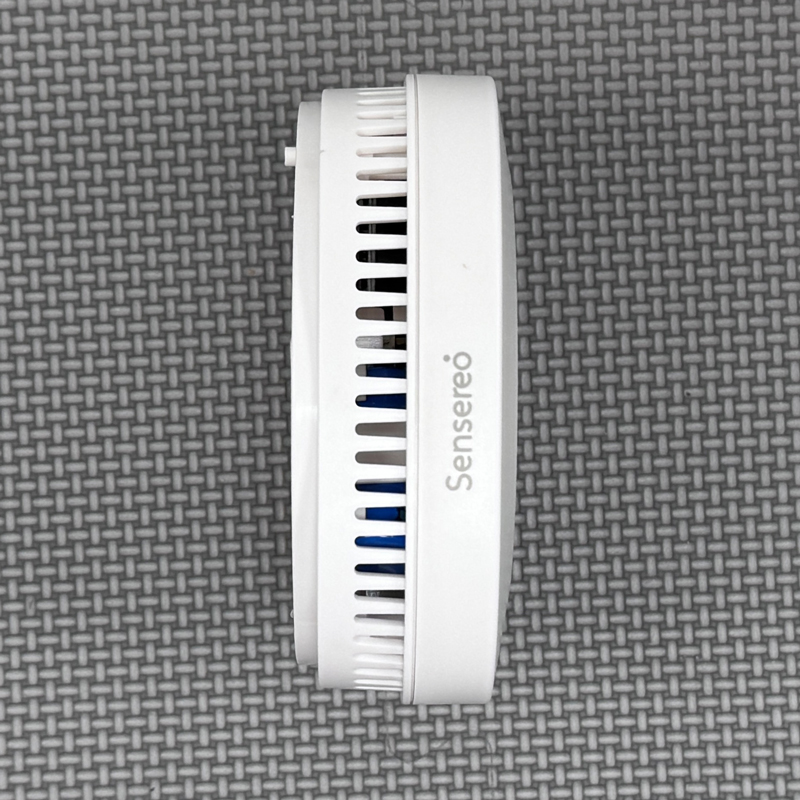

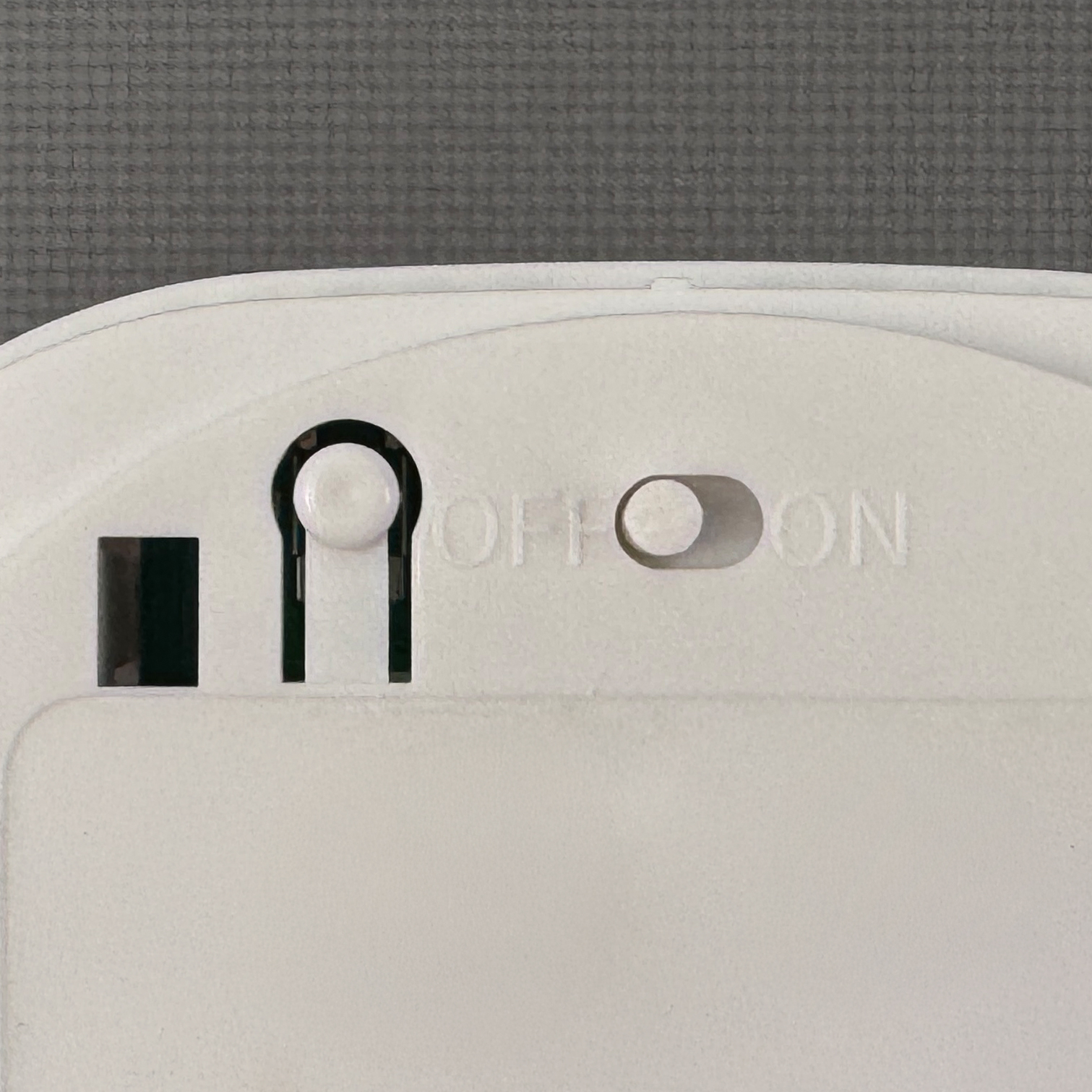

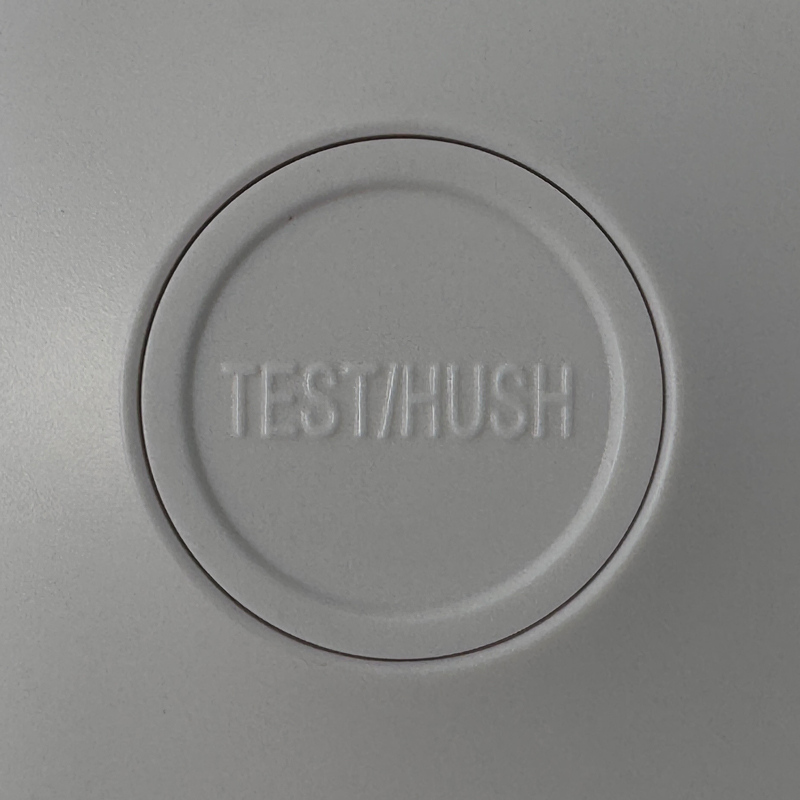


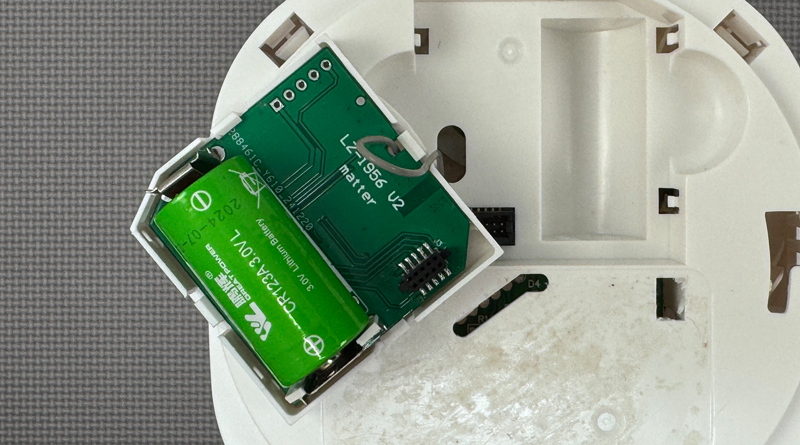



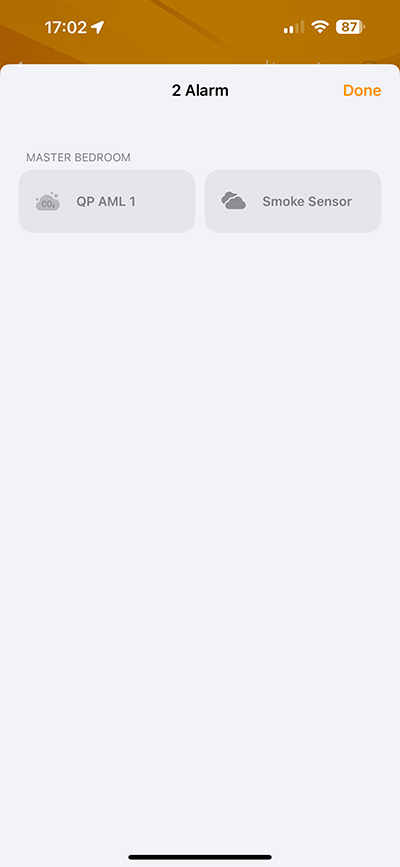

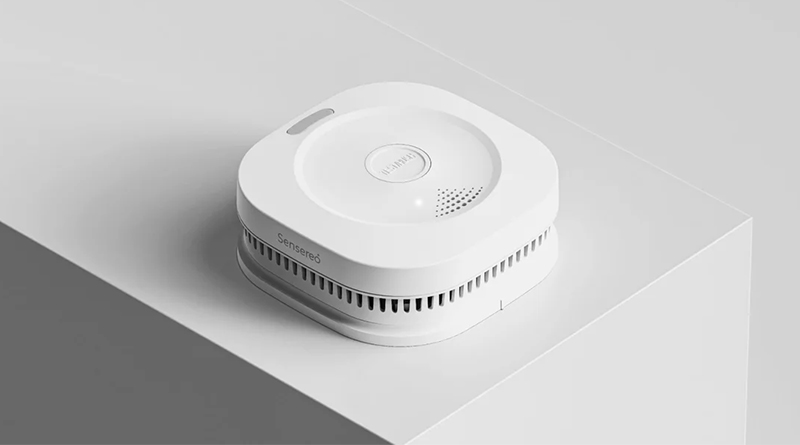

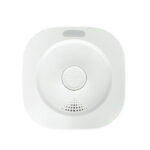
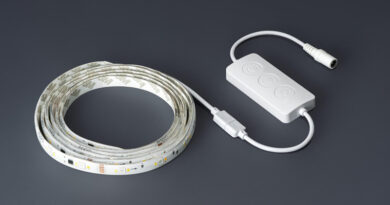


Thanks for the review Simon! My six Nest Protect smoke/CO2 detectors are supposed to be decommissioned by Google in October this year (2025). At that point I will loose all online connectivity and app access, although they will still function as dumb devices.
These new smoke/CO2 detectors look promising and they’re inexpensive.
Smoke detectors in the US have a very specific beep pattern which is different from the beep pattern used in the UK or China. Plus there are some other issues required for certification. So there are actually no smoke sensors that I know of at this time which are certified for use in both the US and in other regions. (This has been a long-standing issue for the Fibaro smoke detector, For example. )
In the US, smoke alarms typically use a repeating three beep pattern to indicate a fire emergency. CO detection triggers a four beep pattern. A single, “chirping” sound every 30 or 60 seconds indicates a low battery.
In the UK, a continuous loud beeping signals a fire or carbon monoxide detection. And some sensors increase the volume of the alert over time, which is intended to wake sleeping people.
So typically a company has to design an entirely different smoke detector for the US market.